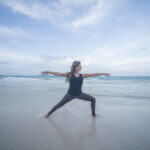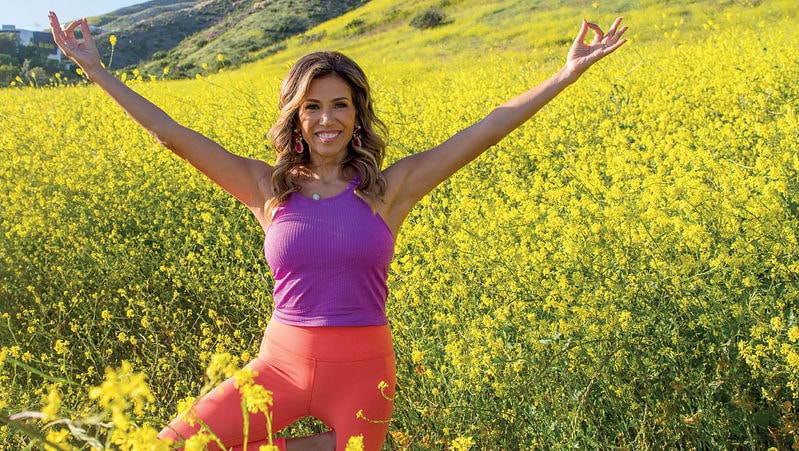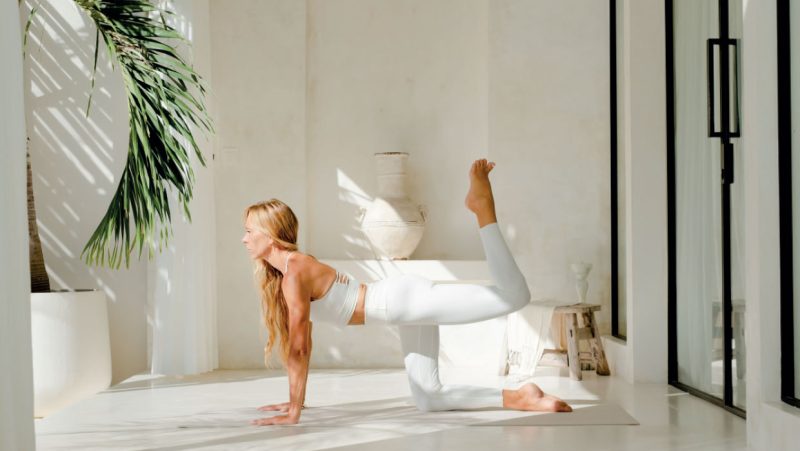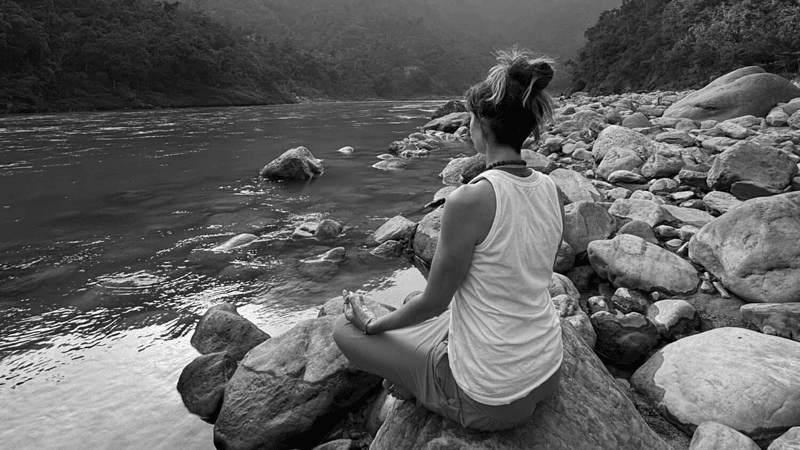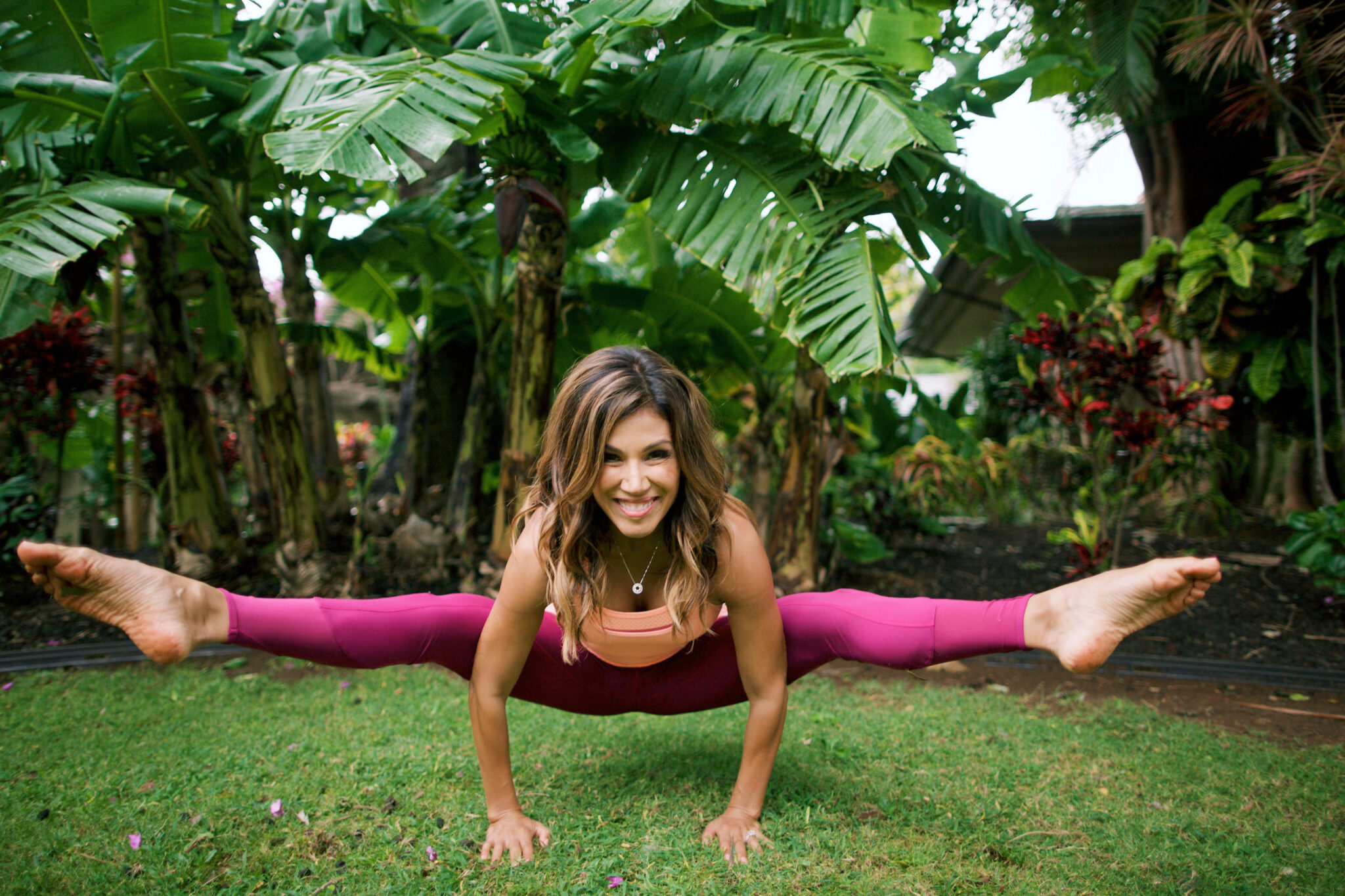
Inversions: 5 tips to take flight in 2021
Rooting to rise: Desi Barlett highlights 5 key inversion tips to take flight in 2021
In the practice of yoga, we learn a lot about creating a strong foundation physically, mentally, and emotionally. As a yoga teacher, I have found that when we cultivate a particular quality in our body, mind, or heart, it informs the other levels of self. Meaning that if I cultivate mental strength, it absolutely helps with physical and emotional strength, and vice versa. In 2021, I am returning to my focus on the physical practice of rooting and I know that this will be beneficial on all levels.
Like so many people across the globe, 2020 shook my roots and I have now found myself in a new city, with new friends, and a new way of life. In this new chapter of 2021, I am very focused on fortifying my foundation. As a yoga practitioner I know that focusing on rooting will allow me to connect to the feeling of having a stable base of support, wherever I am in this world. Also when politics, pandemics, and world events make the world feel tumultuous and unstable, connecting to the earth can be a powerful practice.
In yoga practice, it is common to hear a teacher guiding the feet or even the root chakra to find a sense of connection with Mother Earth. We press the four corners of the feet into the floor and envision an energetic grounding cord from the base of the spine, moving through the layers of the earth like an anchor. The idea is that grounding the energy can help us to feel present in the body. These are all valid and lovely themes, and can also be applied to the hands, literally and figuratively.
While we do not typically stand on our hands in daily life, handstands and arm balances in yoga practice are more commonplace. Many arm balances and inversions (going upside down), can give the feeling of taking flight. This ‘rising’ energy occurs when we root down into the hands. In the same way that we can push into the four corners of each foot, we can push into the outer edges of our hands to create a stable base. When we stand, we stack the joints of the legs; the ankles, knees, and hips. When we stand on our hands, we stack the joints of the arms; the wrists, the elbows, and the shoulders.
While it is possible to stand on our feet and let the core muscles be a little lazy, it is really hard to stand on the hands without engaging the core in a meaningful way. Taking the time to engage the pelvic floor and abdominal muscles will help with the rising action of the body.
Whichever form of standing on hands is appealing to you this season (handstand, forearm stand, side plank, firefly, the list goes on…), there are some basic principles that can help:
Breathe: Yes we hear this all of the time in yoga and there are many valid reasons for focusing on the breath. In arm balances, the breath will help send a signal to the body that the body is safe and the nervous system, while alert, does not have to be alarmed.
Bandhas: In English, the word ‘bandha’ means ‘lock’ and for arm balances we should engage the pelvic floor and the abdominal ‘locks’. This simply means that at the end of each exhale, the pelvic floor lifts and the abdominal muscles contract in towards the midline, giving you more physical power as you harness the energy of the inner core.
Dristi: The word ‘dristi’ means ‘focal point’, and in any balancing pose, it is important to allow your gaze to gently land on one point in the room. Make sure that the point that you have chosen does not move and be aware that you are not ‘zoning out’ or allowing the energy to escape through your eyes. An easy, yet pointed, focus can help with balance.
Root: As you root into the earth, envision a grounding cord moving from the base of your spine to the earth, sort of like an energetic tree trunk that connects you to a strong foundation. In an arm balance, envision additional ‘roots’ in your hands, pressing into the ground like roots of a bamboo.
Rise: From the feeling of rooting, you can feel an upward motion in the torso that allows you not to ‘sit’ into the shoulder joint. When you breathe, engage the inner core, find a focal point, and root into the earth, where you can rise and take flight.
Allow these steps to be a guide as you cultivate a physical practice of rooting to rise. Take a few minutes in your mind, or in your personal journal, to reflect on the steps of rooting to rise in your thoughts and in your emotions.
May 2021 be the year that we all rise together.

